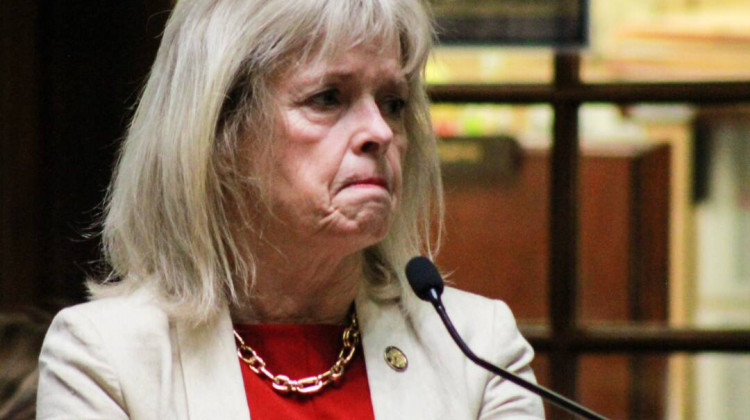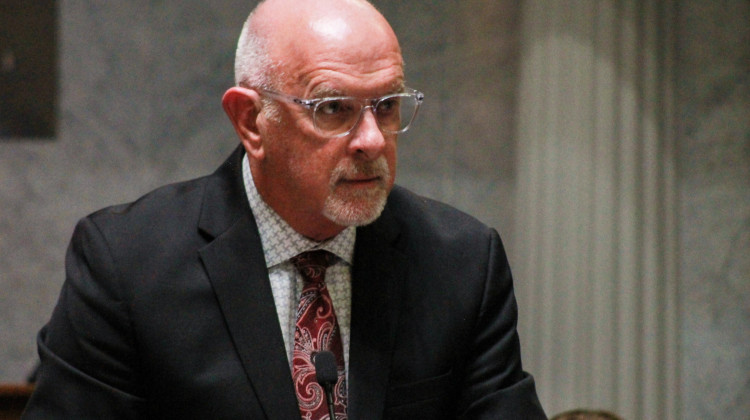
Hoosier National Forest Supervisor Mike Chaveas (right) talks with a southern Indiana resident about how the work on the project will happen over 10 years or more.
Devan Ridgway/WTIUControversy over a project in the Hoosier National Forest has pitted environmental groups and some nearby residents against forest managers.
As part of the Buffalo Springs Restoration Project, the forest service wants to cut down trees, do prescribed fires and use some herbicides on thousands of acres near Patoka Lake.
The project aims to improve the health of the forest by removing non-native pine trees, regenerating native oak and hickory trees and creating more early forest habitat that some wildlife depend on.
But groups like the Hoosier Environmental Council and the Indiana Forest Alliance have concerns. Among other things, they worry clear cutting could erode areas around the lake — adding more sediment pollution to the drinking water for 65,000 residents.
HEC senior policy director Tim Maloney said there are practices the forest service can do to reduce some of that erosion, but not all.
“The question is whether that risk of more sediment in our waterways — that already face risks from too much sediment and too many nutrients — are these kinds of forest management projects going to exacerbate that?” he said.
In March, a federal district court ruled partly in favor of environmental groups regarding a similar project near Lake Monroe.
The court said the forest service didn’t provide a “convincing statement of reasons” why the project wouldn’t significantly impact the lake. Though the court ruled in favor of the forest service on other claims.
Chad Menke, Hoosier National Forest hydrologist, said the forest service will take steps to reduce erosion — that includes avoiding floodplain areas and using existing trails when possible. He said the forest service will also monitor the water quality and monitor for for soil disturbance.
Menke said the project will also take place slowly over 10 years or more.
“This project seems huge, but in reality — if you only harvest a few 100 acres a year— you're going in, by time you go to your next plot, the other parts have already healed up," he said.
Join the conversation and sign up for the Indiana Two-Way. Text "Indiana" to 73224. Your comments and questions in response to our weekly text help us find the answers you need on statewide issues, including this series on climate change and solutions.
Environmental groups also worry that cutting down some stands of older trees would reduce the amount of carbon emissions the forest can absorb to fight climate change.
Jeff Dukes is a Purdue University professor and directs the Purdue Climate Change Research Center. He said creating suitable habitat for Indiana species may be a more important goal than storing a little more carbon.
“Those few 100 acres in Indiana are also busy providing habitat for a variety of different species that are going to find themselves in facing increasing challenges as the climate changes around them," Dukes said.
The Hoosier National Forest will hold a virtual public meeting on the project on Tuesday, April 26 at 6 p.m. The forest service said the meeting is for information only and no official public comments will be taken during that time.
Contact reporter Rebecca at rthiele@iu.edu or follow her on Twitter at @beckythiele.
Indiana environmental reporting is supported by the Environmental Resilience Institute, an Indiana University Grand Challenge project developing Indiana-specific projections and informed responses to problems of environmental change.
9(MDAyMzk1MzA4MDE2MjY3OTY1MjM5ZDJjYQ000))
 DONATE
DONATE






 Support WFYI. We can't do it without you.
Support WFYI. We can't do it without you.